The Challenge
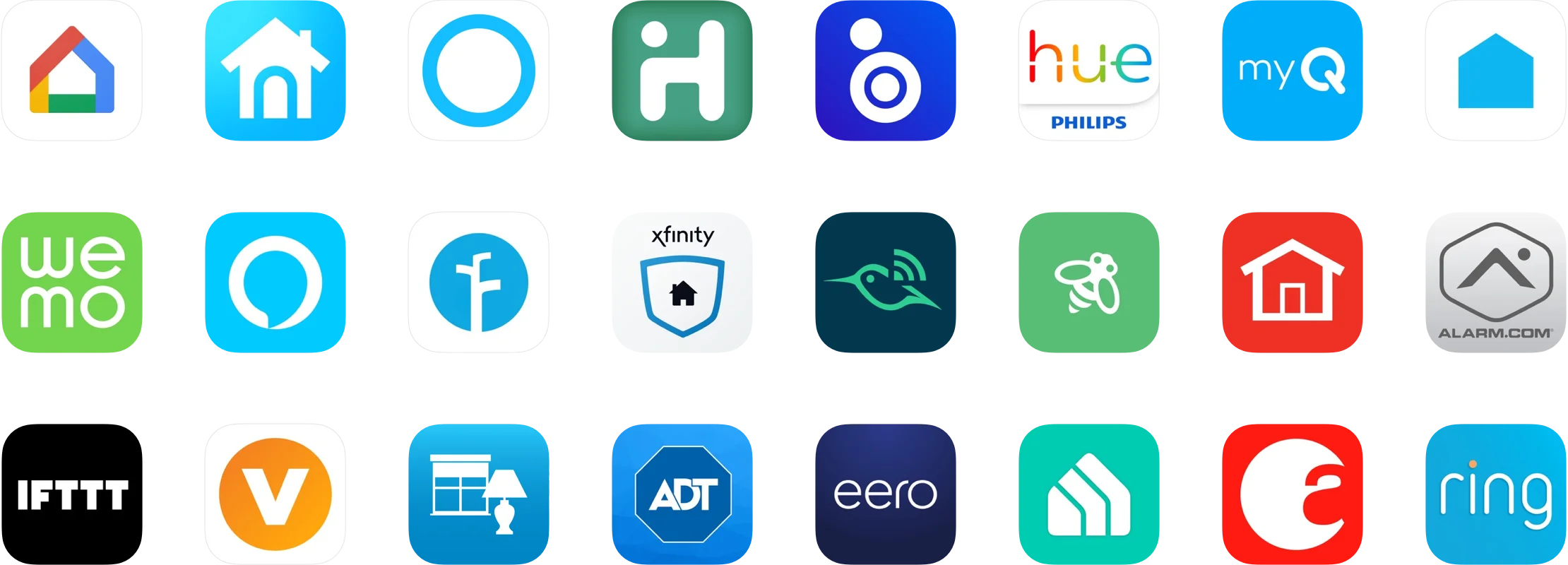
The Plan
1 User Research
I started by scanning discussion boards on social media sites like Reddit and Facebook. I wanted to isolate a user base that was involved enough to research new devices and solutions by talking about their smart home online. Additionally, I needed to determine if they may have already looked for solutions to this problem, and if so, what they were.
On average there were about ~60k members in the 20 smart device groups I found matching this use case, for a total of ~1.2M members. Although this is a small segment of the *24.3 million smart homes forecasted in 2018, I set this benchmark as the max potential reach for this product at the time.
*Source: S&P Global2 Competitive Analysis
As part of my research, I needed to see what other options were out there for users. I found a few companies in this space, all of which had varying success, but they also all seemed to have some significant shortcomings. Either they didn't support the right devices, or they didn't have a user interface, or they required major heavy lifting from the user to custom code a solution. Ultimately, consumers want to choose the devices that best suit them. They want those devices to talk to their other devices, and they don't want to have to build the solution themselves. The main competition consumers were using at the time were Wink, SmartThings, Home Assistant, IFTTT, and Stringify, which on average supported 120 device integrations within their respective systems.
3 Market Fit
The smart home market in 2018 was forecasted to be *$28 billion. With 24 million smart homes, that makes the average household spend for that year $1,167. This meant that if we reached the full potential of the 1.2 million user benchmark I set for the product, we could grab a market share within a $1.4 billion market segment. Even if we only obtained 1% of that user base, we could still take a share of a $14 million segment.
Armed with this data, I felt confident that Aegis would be able to offer a viable solution that could grab a decent share of the market that would make the product prosperous. More importantly, provide a solution that helps alleviate the tension users face when adopting smart devices.
*Source: IHS MarkitThe Solution
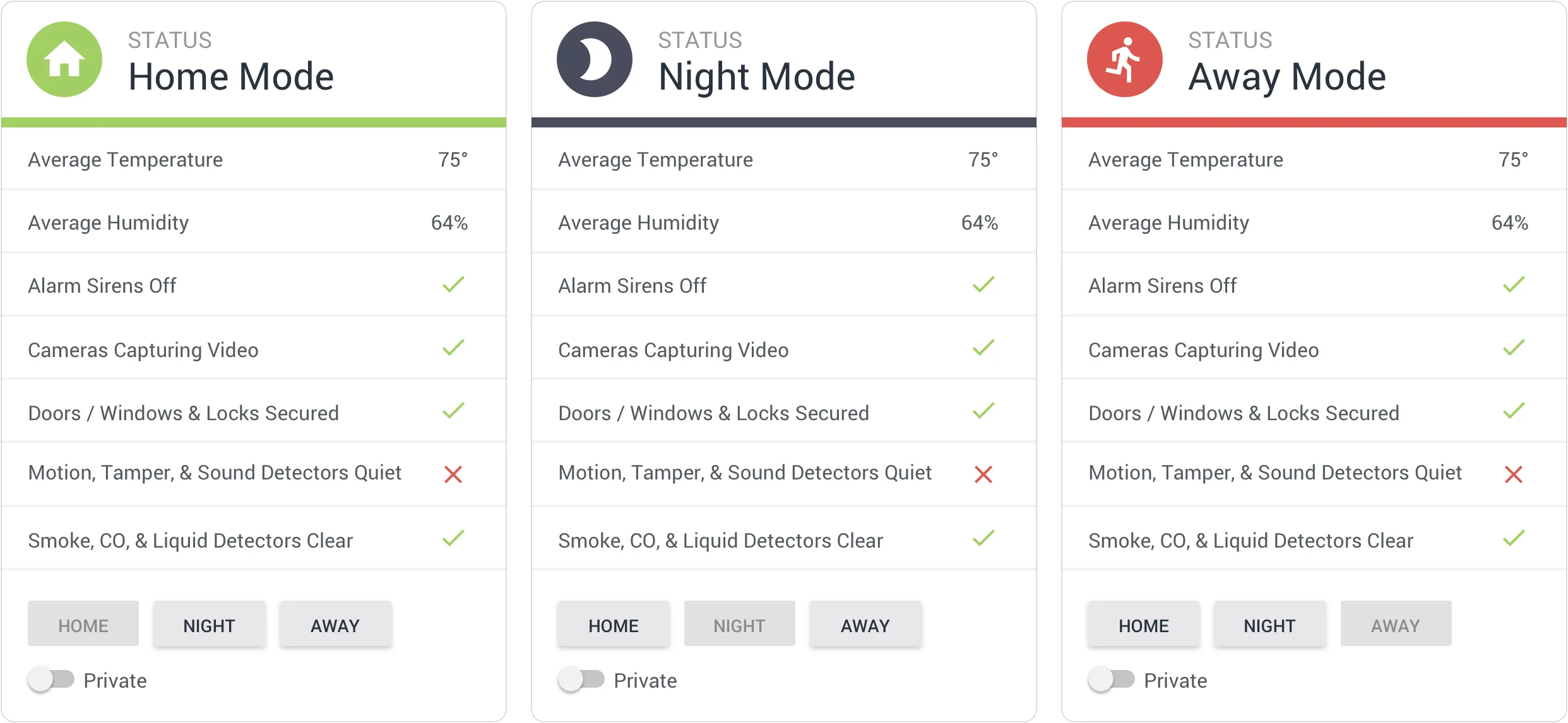
The first thing to accomplish was to ensure that the user understood the state of their home at a glance since this was something that all competitors were failing to accomplish. To start I designed a status panel/ card that would not only show the current alarm mode, but also the high-level state of all the security and climate devices. Additionally, the user could quickly change the alarm mode right from this panel.
It was important that this design was responsive and would work on mobile devices as well as on the desktop. On mobile devices, this is the main tab of the app. On tablet or desktop devices, it is the primary card in any view, either the default categories or user-defined groups.
Now that the high-level state of the security devices has been provided, it was time to show the individual device states as well. To get started I made sure to utilize multi-state buttons that offer accessibility options, such as differentiated icons in addition to color. The mini-state of these devices offered important details about the device's current state. A user could instantly see if the device was on or not, along with any relevant settings like light bulb color, or brightness. Or the current speed setting of a fan. It also showed the user if the device lost connection, or has a low battery. Additionally, for devices with on/off actions, a simple tap/click interaction would toggle the device's powered state.
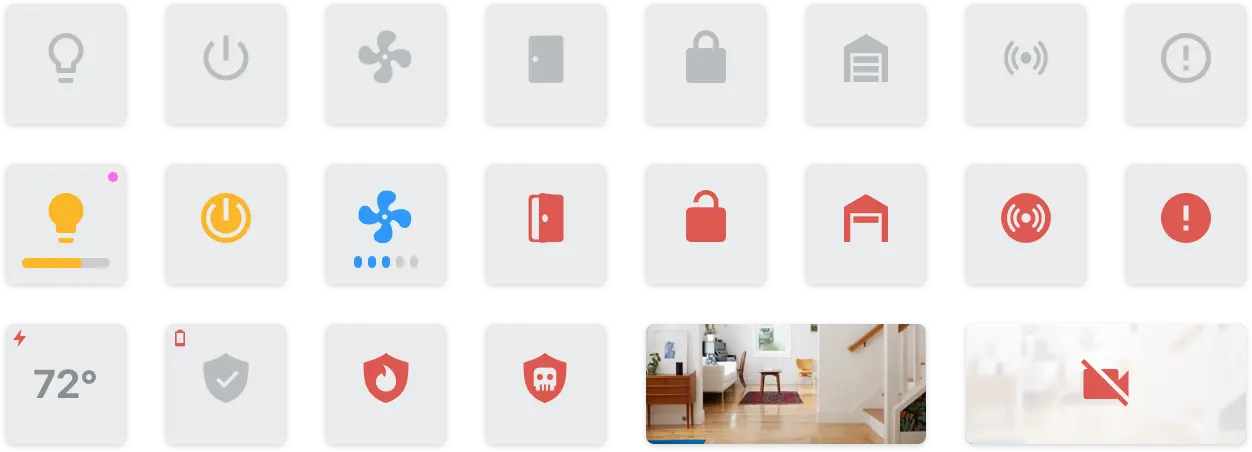
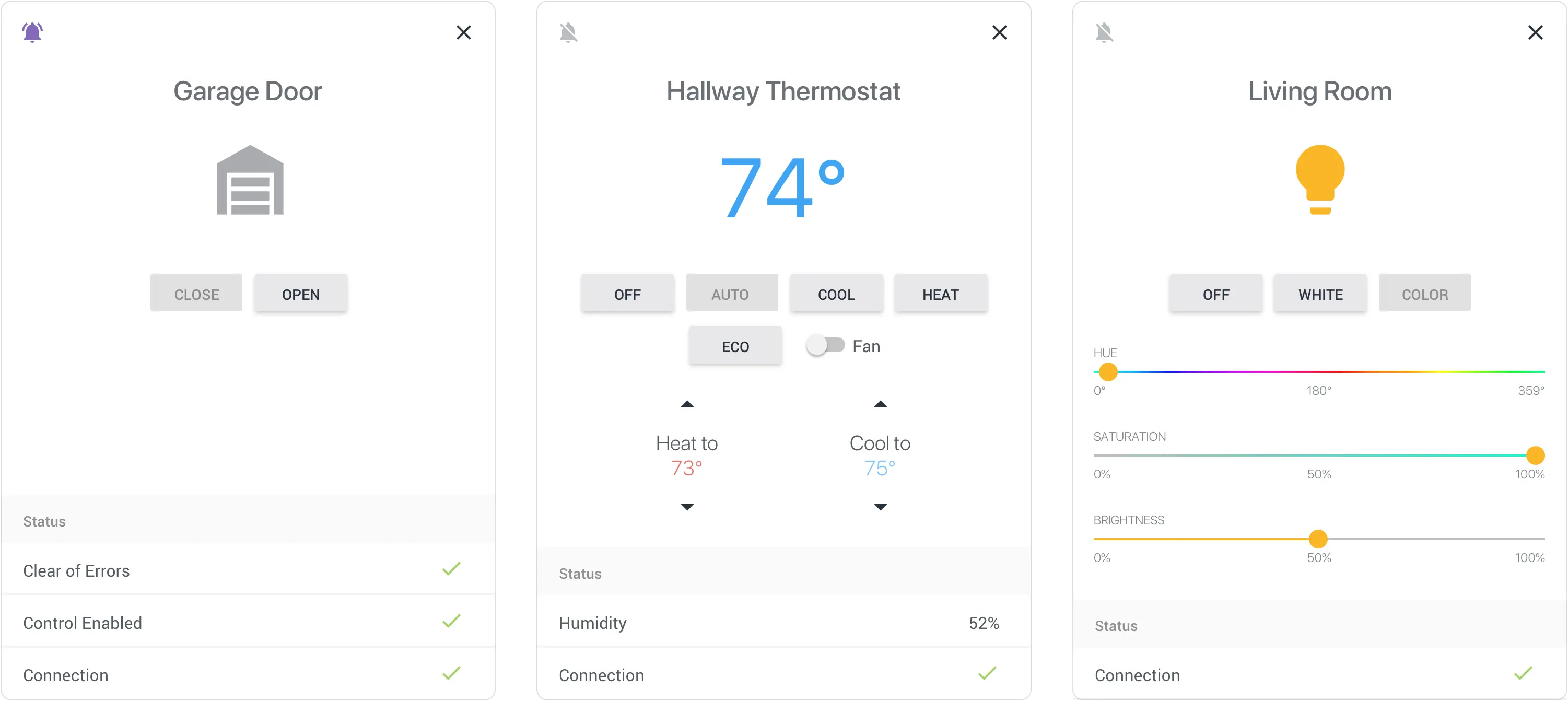
With the entire state of the home now visible at a glance, it was time to make sure the user could control as much as they needed to as well. Each of the mini-state buttons could be opened up from a more link that appears on mouse hover (long press on touch devices). Within each of the device panels, lives important and relevant details and/ or controls for that specific device.
The top part of this panel incorporates actions for closing the panel and turning on/off device notifications. The next section shows the device name and current state icon. From there, any available actions are provided to the user, and depending on which action is taken, contextual options for that specific state will dynamically appear below. Lastly, a list of additional information is presented at the bottom.
The Results

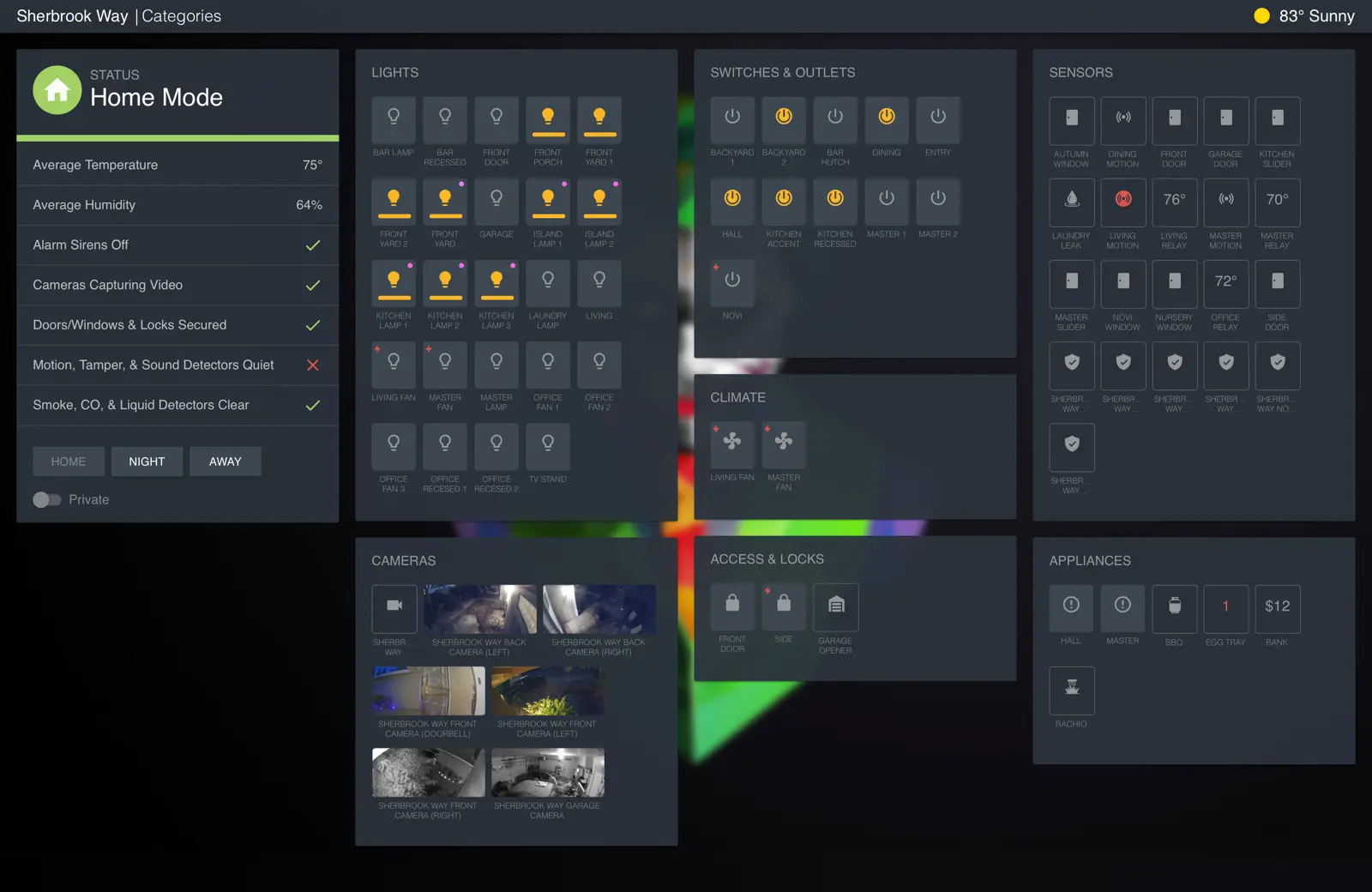
The foundation was set, now it was time to bring it all together. My team and I built out the product and offered it as a beta to anyone who wanted to use it. We gained user feedback and implemented some small and big wins along the way. We overwhelmingly received positive feedback, and users constantly praised our efforts. Throughout the beta (2 years), we supported 36 device integrations, gained ~1,000 unique users, and ~40 monthly active users, 35% of which came back every day.
The most requested feature was more device integrations, which just so happened to be the biggest roadblock for us. Because we were a small and new company, trying to get device providers on-boarded was especially difficult. Partially because we had to write each integration manually, and also because most smart home device providers didn't offer third-party access to their APIs at all, or at least not without some kind of partnership agreement. Even the providers that did offer API access were almost always lacking in functionality compared to their native offerings.
Shortly, we started to see some big companies like Apple, Google, and Amazon offer home dashboard interfaces. With all the competition in this fragmented market, these bigger companies start to corner the market and buy up smaller companies to gain an advantage and take away access from the others, such as Google buying Nest and then dismantling Works with Nest.
However, the good news is, these larger companies have a better opportunity than we did to get other companies to integrate into their system. This will hopefully lead to a single standard for the connected home, which after all, is the ultimate goal.
The Future

The next steps and future vision for Aegis Platform incorporates multi-location views with high-level info for all devices in each location. Additionally, providing user location support along with local user info like calendar info, music player, time, and weather. With these updates, the connected home would start to actually be smart.